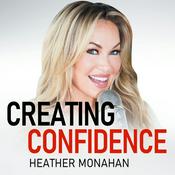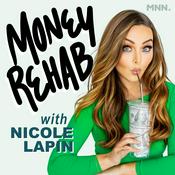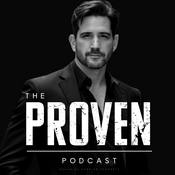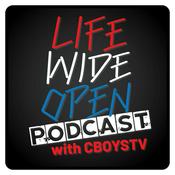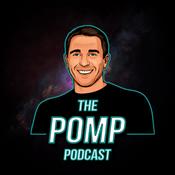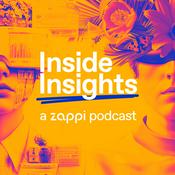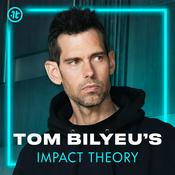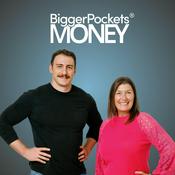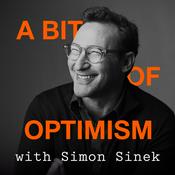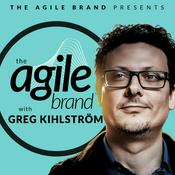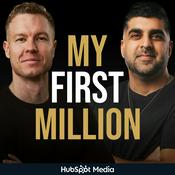Available Episodes
5 of 24
- Southern Rust Surprises the NorthOn today's episode: Why did we see so much southern rust in the 2025 corn crop? We talk about this foliar disease, where it comes from, the impact it had on the crop and what farmers can do to better manage it going forward. We'll also explore some fascinating agriscience happening that will give farmers better protection against crop diseases like southern rust in the future. To guide us through all of this, we're talking to Mark Jeschke, agronomy manager supporting the Pioneer brand at Corteva Agriscience. Mark has been with the company for 18 years and is currently based in Johnston, Iowa. He also farms with his family in Northern Illinois. Also joining the show is Pioneer field agronomist Carl Joern. Carl saw a lot of southern rust this past growing season in his area of northwest Indiana and northeast Illinois. He works directly with farmers in his role as a field agronomist and focuses on making sure they can make the most profit from Pioneer products.“ Southern rust can be scary, especially if you don't have experience with it and when you have environmental conditions that stack the deck in its favor. There are fields across the Midwest this year that got sprayed with a fungicide and in three weeks that corn crop looked dead. And folks are trying to consider how to manage for a disease and how you invest in a crop that doesn't look like it's invested back in your operation…Like anything in farming, how you manage your operation has an impact on how pathogens proliferate and how different weed species grow or don't grow on your farm.” - Carl JoernAnd while this year was bad and was a learning experience for many people, it’s not a new disease. Mark Jeschke remembers starting to see it in 2016 and says it has shown up earlier and earlier in the last couple of years, creating a bigger management concern. This threat can become a huge issue, taking away yield and potential revenue at a time when margins are thin. But could some of the modern gene editing tools that we’ve talked about in previous episodes of this podcast potentially help reduce this risk? Jeschke definitely sees this as a possibility. “ What our scientists have done is take multiple disease resistance genes and stack those all together. So you're delivering multiple genes for resistance to different diseases all at once…It's a concept that can be expanded going forward that can add more resistance genes to it…So it can be iterated and improved upon over the years. So that's very exciting.” - Mark JeschkeA few takeaways from today's episode: A better understanding of southern rust: where it comes from, what causes it to spread and some management tipsFor as sophisticated as modern farming is, there are curveballs every year. Sometimes the timing doesn’t work out to address them reactively. That’s why the work of agriscience innovation is never finished to create better solutionsMulti-disease resistance or the disease super locus is really an exciting development. This is a very real and timely example of where gene editing technology could address a problem that farmers have no way of knowing in advance if they need to prioritize. Agriscience Explained is brought to you by Corteva Agriscience and hosted by Tim Hammerich. This show is produced by Clint Pilcher, Rayda Krell and Ann Leonard. Jaime Hammerich and Grant Bolton edit these podcasts, and the music was composed by Dmitri Volkov. Subscribe for more Agriscience Explained: From Science to Solutions.--------30:06
- Stewarding the FutureToday’s episode dives deep into creating a comprehensive and integrated approach to weed management. Agriscience has proven that we can make effective products, but can we make those effective products last? This process of preserving our latest and greatest tools is called stewardship. In this episode we take a deep dive into what it looks like to create solutions with stewardship in mind from the outset by taking a look at the Enlist program. Bill Belzer joins us as the lead of the Stewardship Team for Corteva Agriscience based in Johnston, Iowa. Belzer and his team work across seed, crop protection and seed applied technologies to make sure stewardship is at the forefront. We are also joined by John Davis, a farmer in Delaware, Ohio. Davis shares his experiences as both a multigenerational farmer in the area, and a Pioneer Rep on the front lines of serving other farms in the area. Davis says when it comes to challenges they have to face in farming, weed control is certainly toward the top of the list. “ One of the things that listeners can appreciate and farmers especially know is that they're in a race against biology. We think about managing land is managing the sun and then the biological ecosystem that goes with that. And within that ecosystem you've got weeds, you've got insects, you have fungal organisms, and they're always on the move and they're always shifting…. So growers are faced with staying ahead of biology.” - Bill BelzerThe team at Corteva Agriscience took an industry-leading approach to stewardship with the Enlist program. Think of the Enlist Weed Control System and Enlist Ahead as a means of preserving a program that provides long-term weed control. But for this to happen, it’s going to take a multitude of decisions from everyone involved. Not just researchers, but agronomists, farmers, and other trusted partners that all contribute to agronomic and economic decisions on the farm. “ Probably the most difficult thing is when you're sitting across the table from a grower, you've got your sales rep hat on and you're trying to encourage them to do the stewardship program and use the right product. It comes down to dollars and everyone believes they can do something less expensive, but you try to work through that and explain to them.” - John DavisA few takeaways from this episode: There’s a whole lot more to stewardship than I’d ever considered. And it starts much earlier than I had considered. Stewardship goes way beyond reducing weed resistance to Enlist herbicides. Long-term efficacious weed control is the goal here.This really does take a commitment from all involved. Everyone needs to understand what’s at stake here and what role we all need to play in stewarding these products and programs. Agriscience Explained is brought to you by Corteva Agriscience and hosted by Tim Hammerich. This show is produced by Clint Pilcher, Rayda Krell and Ann Leonard. Jaime Hammerich and Grant Bolton edit these podcasts, and the music was composed by Dmitri Volkov. Subscribe for more Agriscience Explained: From Science to Solutions.--------28:58
- From Rum to Revolution: How Spinosyns Changed Pest ControlOne scientist's vacation 30 years ago is a big reason why you don’t end up with caterpillars in your lettuce today. The class of chemistry derived from this remarkable bacteria is called Spinsoyns based on the scientific name for the bacteria, Saccaropolyspora spinosa. To tell this incredible story of a bacteria discovered in an unlikely location, we’re joined by Jesse Richardson, a field scientist at Corteva Agriscience based in Mesa, Arizona. Jesse has been with the company for about 39 years, where his job is to characterize new active ingredients and to provide technical education and technical service to growers and pest control advisors. Joining Jesse is Pest Control Advisor (PCA), Bill Fox. Bill has been a PCA since 1978, and is based in Yuma, Arizona serving farmers on both sides of the Arizona California border. He’s going to give us a field-level perspective on what impact spinosyns have had for farmers in his area. “ So it's a naturally derived product, but what was most exciting about it was it had the ecotox attributes of a biological, but the performance attributes of a synthetic…So when I saw its efficacy and this combination of safety on these natural enemies, I knew that we had something that was going to just blow the doors off the industry.” - Jesse RichardsonJesse and his colleagues were convinced about the efficacy of this natural bacteria-derived insecticide. But as we’ve heard in other episodes, there’s still a process to taking the science and turning it into a solution. It was a commercial success for Corteva Agriscience because it was embraced almost immediately by growers and PCA’s like Bill Fox. “ It's just a fun time to be a PCA and to see what we accepted back when I was a kid, and now to see how effective these new products are on the same pests that I couldn't kill 20 years ago or so...Its been pretty fun.” - Bill FoxA few takeaways from this episode: There is great opportunity that exists with biologicals. Not every product is going to work, but there’s some pretty incredible stuff out there when we combine discovery with modern tools to advance natural compounds and make them more effective solutions. Stewardship and longevity is a choice, or rather a series of choices to protect these tools, and it’s a shared responsibility. Spinosyns are a great example of needing efficacy. Nobody wants a worm in their lettuce and all want to make sure we are protecting non-target species. Spinosyns are incredible products for threading this needle. Agriscience Explained is brought to you by Corteva Agriscience and hosted by Tim Hammerich. This show is produced by Clint Pilcher, Rayda Krell and Ann Leonard. Jaime Hammerich and Grant Bolton edit these podcasts, and the music was composed by Dmitri Volkov. Subscribe for more Agriscience Explained: From Science to Solutions.--------29:22
- Using Biology To Protect Your Most Valuable AssetTermites are not typically considered an agricultural pest, but they are a great example of how science, in particular biology, can be used to create better pest management solutions that have real economic impacts. Termites cost U.S. homeowners at least $5 billion per year. The landmark innovation in termite pest control happened about 30 years ago, with a partnership between Corteva Agriscience and the University of Florida to develop Sentricon. It’s a story of not only a new tool to use against termites but a new way to think about pest management. Stephen Gates joins us from Cooks Pest Control. Gates has a degree in entomology and has been helping Cooks offer Sentricon to their clients for nearly 27 years. We’ll also be hearing from Garima Kakkar and Neil Spomer, Corteva experts who work behind-the-scenes to improve Sentricon every year. Garima is the Global Biology Lead for urban pests and Neil works as a field trial modernization lead. “ This time of year and in the spring it was running wild. Just trying to take care of current customers who were having swarms, dealing with damaged claims, dealing with new customers, working with them because they were having swarms.... Homeowners are scared. They hear about these things and now all of a sudden they see them. And now my biggest investment's being chewed on by a bug, right?” - Stephen GatesBefore Sentricon was created, liquid chemicals were the only option for homeowners to protect themselves from termite damage. With Sentricon, pest control technicians set up bait stations. These bait stations use the natural behavior and biology of the termites against them. But the genius behind Sentricon is not just getting the termites to eat bait, it’s capitalizing on something called trophylaxis which means that termites rely on their hunters and foragers to not just collect food, but to regurgitate it to the rest of the colony.“ For termite baiting to work, you need it to be both non repellent, you don't want the termites to know that they're eating anything that is bad for them, and it has to be really slow acting so that they have time to go back to the colony and through trophylaxis, share it with the rest of their nest mates.” - Neil SpomerA few takeaways from this episode: Termites are fascinating. From how they establish colonies, to trophylaxis, to their ability to avoid dangerous environments, they are a very interesting species. Understanding biology at a deeper level can lead to innovations in management. Rather than trying to find more and more effective ways to inject chemicals, Sentricon rethinks the process from first principles. Adoption of innovation takes time. Sentricon has been effective from the beginning and improved over 30 years, but some customers are still just uncomfortable with trying a new approach. Agriscience Explained is brought to you by Corteva Agriscience and hosted by Tim Hammerich. This show is produced by Clint Pilcher, Rayda Krell and Ann Leonard. Jaime Hammerich and Grant Bolton edit these podcasts, and the music was composed by Dmitri Volkov. Subscribe for more Agriscience Explained: From Science to Solutions.--------32:06
- The Recipe for Protecting Seed PotentialOn today’s episode we explore the incredible power of seed applied technology. Seed treatments are incredible tools that help protect the seed and seedling plant in the first 10-30 days of development. The fact that the technology is delivered on the seed itself without having to spray or make any sort of extra pass with equipment makes this area of agriscience sometimes overlooked or even underappreciated. To dive into this technology further we are joined by Mark Howieson, who serves as the global technical services team leader for the Seed Applied Technology Segment of Corteva Agriscience. We also hear from Iowa farmer Scott Van Veldhuizen who farms corn and soybeans. Scott shares the impact progressive seed technology has had on his operation especially in regard to cutworm infestations. “You know, when I was a kid it was work all sun up to sun down….we're definitely more efficient, you know, 20 to 30 years ago you couldn't do this job by yourself.” - Scott Van VeldhuizenScott doesn’t consider himself a first adopter of new ideas, but maybe more like a fast follower. Through his farming career he has collaborated with companies like Corteva Agriscience on a variety of trials, and he’s always looking for what might help him get more efficient and continue to boost his yields. And obviously that requires a lot of trust in the technology. That trust comes from the fact that there’s a whole lot that goes into creating the right recipe that fits Scott’s genetics and his situation. Howieson shares that what makes seed applied technology dynamic are the different needs of farmers. So not every seed treatment is the same. Mark likes to look at it like a recipe where each ingredient is important, but they also have to compliment each other in a way that leads to better outcomes for farmers. “ There's a chemistry element of it where you're working with formulations and then there's a biological element where we’re putting microbes and biologicals on the seed…And the interactions with the people and the people in the industry, it's pretty incredible. I mean, seed treatment is a relatively small network, and it's where you really have to put yourself out there and understand a lot of different disciplines to truly be successful.” - Mark HowiesonA few takeaways from this episode: There is a significant impact seed applied technology can have and the unique position it sits in ties together the genetics, crop protection and management practicesThe PASSER (Plantability, application, seed safety, stewardship, efficacy and regulatory) acronym. We tend to think efficacy is all that matters but agriscience leaders like Mark have to take into consideration a number of factors to actually bring a viable recipe to the marketDetails matter. Seed applied technology is such a great example of how one detail can really make a massive difference. If that crop can be protected and supported through the early days of development it really can make a big difference in yield and profitability. Agriscience Explained is brought to you by Corteva Agriscience and hosted by Tim Hammerich. This show is produced by Clint Pilcher, Rayda Krell and Ann Leonard. Jaime Hammerich and Grant Bolton edit these podcasts, and the music was composed by Dmitri Volkov. Subscribe for more Agriscience Explained: From Science to Solutions.--------30:44
More Business podcasts
Trending Business podcasts
About Agriscience Explained
This is Agriscience Explained: from science to solutions. A podcast brought to you by Corteva Agriscience. Host Tim Hammerich visits with both scientists and farmers about how agricultural innovations are discovered, developed and deployed on the farm.
Farming is a business, profit is never guaranteed. To manage risk and give the crop the best possible chance of success, farmers rely on the latest in management practices, and some really cutting edge science. We call it agriscience. This study brings together biology, chemistry, agronomy, ecology, physics, genetics, data science and numerous other fields to find the best possible solutions for farmers.
It’s complex, and it’s changing fast. The stakes have never been higher to equip farmers with the best possible tools for a productive, profitable and sustainable crop.
Podcast websiteListen to Agriscience Explained, Creating Confidence with Heather Monahan and many other podcasts from around the world with the radio.net app
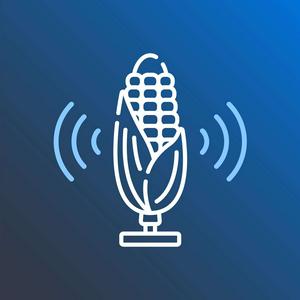
Get the free radio.net app
- Stations and podcasts to bookmark
- Stream via Wi-Fi or Bluetooth
- Supports Carplay & Android Auto
- Many other app features
Get the free radio.net app
- Stations and podcasts to bookmark
- Stream via Wi-Fi or Bluetooth
- Supports Carplay & Android Auto
- Many other app features


Agriscience Explained
Scan code,
download the app,
start listening.
download the app,
start listening.
